Vietnamese vegetables are celebrated for their freshness, quality, and variety, making them a cornerstone of the country’s vibrant culinary tradition. Known for their nutritional benefits and rich flavors, these vegetables contribute to the growing global appreciation for Vietnamese cuisine. Discover this Vietnamese vegetables list that elevate authentic dishes and enhance your culinary journey through Vietnam with our comprehensive guide.
Bean Sprouts (Giá đỗ) – A staple in Vietnamese vegetable rolls
Bean sprouts are one of popular Vietnamese vegetables featured in dishes like vegetable rolls, noodle soups, and traditional salads. They also play a crucial role in canh chua, a tamarind sour soup. Nutritious and low in calories, bean sprouts offer vitamins, protein, and various health benefits, including improved immunity, better eyesight, and stress relief.

Malabar Spinach / Vietnamese Spinach (Rau mồng tơi)
Malabar spinach (Rau mong toi) is a beloved Vietnamese vegetables, known for its vibrant green stems and heart-shaped leaves. It’s featured in various dishes, from poached preparations to comforting soups. Beyond its delicious taste, Malabar spinach offers notable health benefits, such as reducing osteoarthritis symptoms and lowering cholesterol levels in diabetics. Its mild flavor and tender texture also make it appealing to picky eaters, especially children.
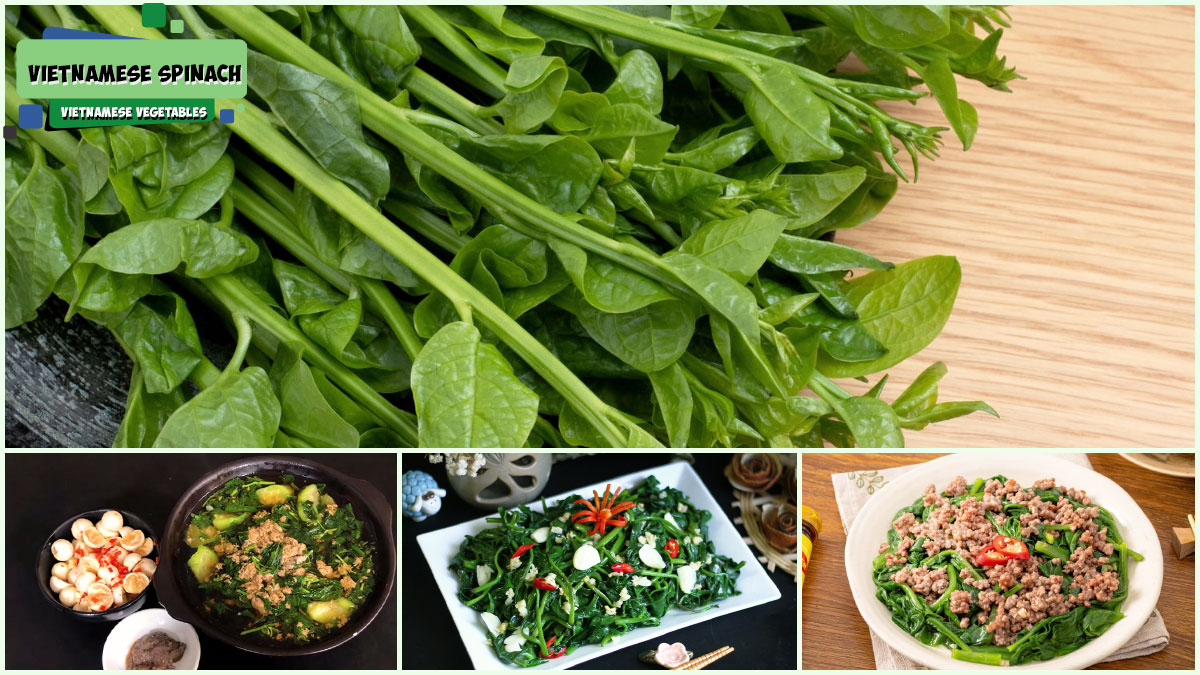
Bamboo Shoots (Măng)
Bamboo shoots are a cherished ingredient in Vietnamese cuisine, coming in varieties that range from sour to sweet to bitter. They are used in a variety of dishes, including stir-fries with pork or vermicelli, and traditional noodle soups like duck soup or bone stew. Bamboo shoots add a unique and delightful flavor to meals. In highland regions like Ha Giang and Lao Cai, they are commonly sold at roadside stands and markets, reflecting local culinary traditions.

Beet Greens (Rau dền) – Known for being highly nutritious among Vietnamese vegetables
Beet greens (Rau den) are a nutritional powerhouse, rich in essential vitamins and minerals like zinc, calcium, and iron. Known for their hardy roots and drought resistance, these dark green leaves with red veins enhance soups with added flavor and depth. They pair well with ground pork or can be poached and served with braised pork. Versatile and nutritious, beet greens are perfect for enriching various dishes and experimenting with different cooking methods.
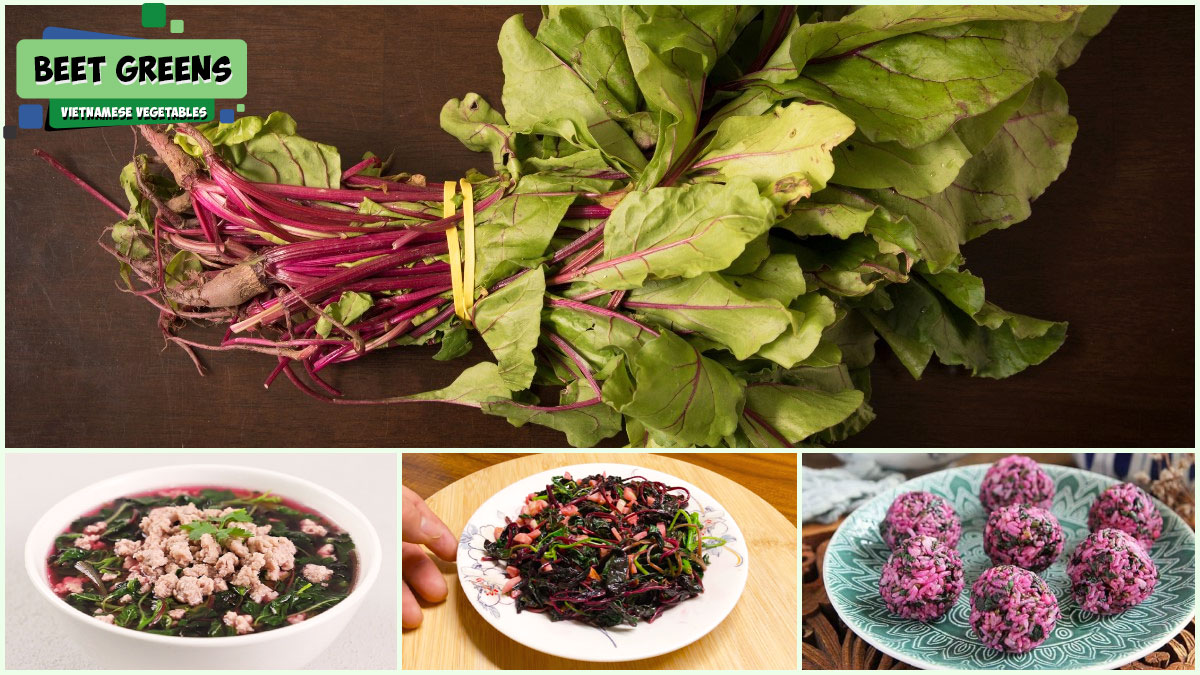
Cabbage (Cải bắp)
Cải bắp is a staple in Vietnamese cuisine, offering a range of varieties with distinct shapes and nutritional benefits. Known for their bright green color and health advantages, cabbages are versatile in cooking methods. Whether boiled, stir-fried, or added to hot pots, they enhance dishes like minced meat soup, fried cabbage, and kimchi. If you visit Vietnam, exploring local cabbage dishes is a must for experiencing the full spectrum of this nutritious vegetable.
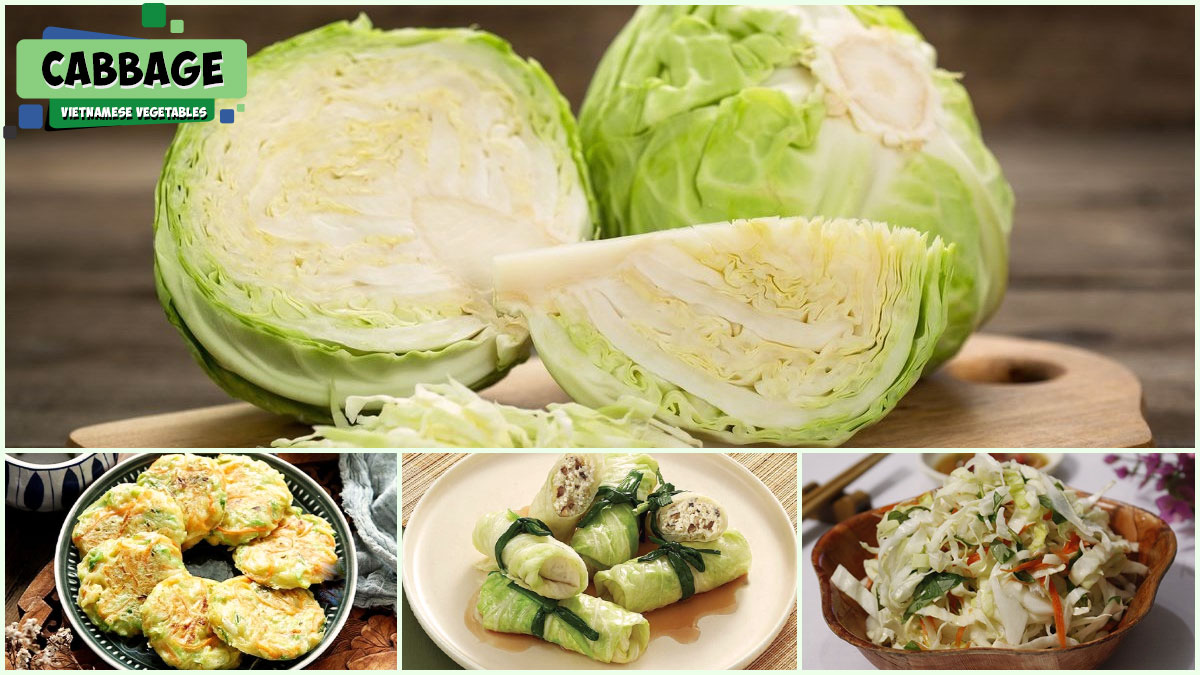
Morning Glory (Rau muống) – A highly popular green vegetable in Vietnam.
Morning glory is a prominent green vegetable in Vietnamese cuisine, grown year-round and widely used in households. Recognizable by its long stems and funnel-shaped leaves, it thrives in both land and water. Commonly boiled and served with soy or fish sauce, its water can be used to make a refreshing soup with lemon juice. Morning glory can also be added to salads or stir-fried with garlic or beef, though those with gout, hypertension, or osteoarthritis should avoid it.
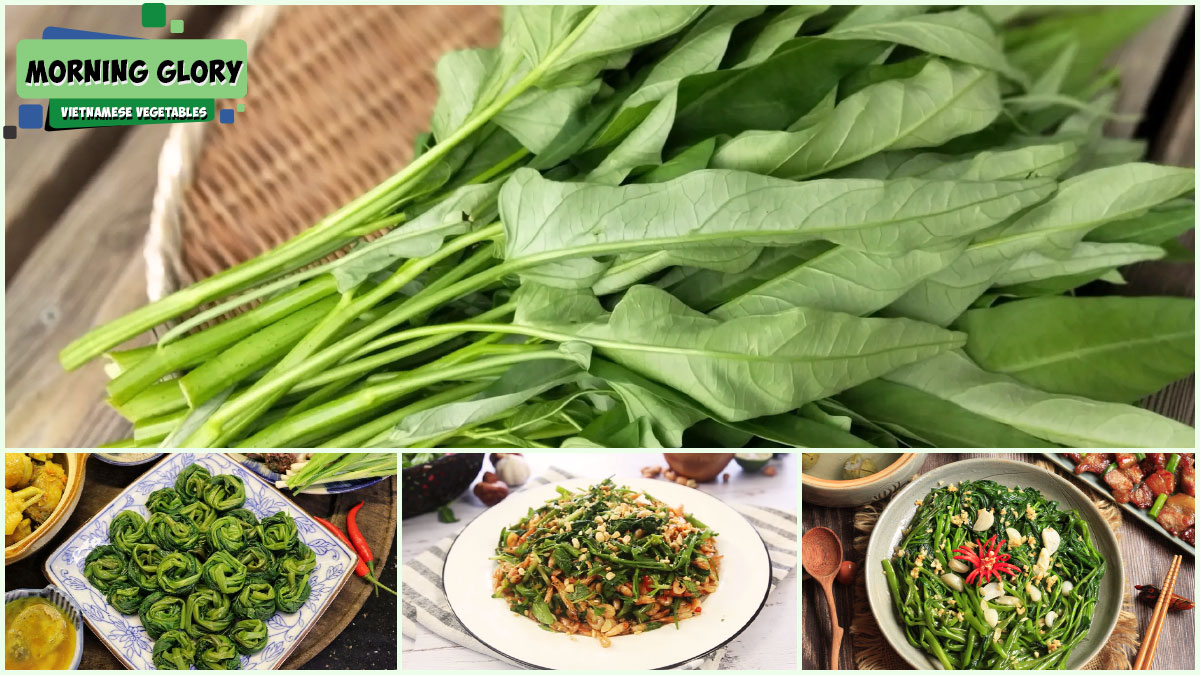
Mustard Greens (Cải xanh)
Mustard greens are a cherished vietnamese vegetables, enjoyed both raw and cooked for their rich nutritional profile. Packed with vitamins A, C, and K, and minerals like calcium, iron, and potassium, they are a healthy choice. A popular dish is pickled mustard greens (dưa cải chua), where the greens are salted and fermented to create a tangy, crunchy, and slightly spicy condiment. This pickle is often served with grilled meats or fried rice.

Bok Choy (Cải thìa)
Bok choy, or Cải thìa, is a versatile leafy green popular in Vietnamese cuisine. Its crisp texture and mild flavor make it an excellent addition to various dishes, favored by health-conscious eaters for its nutritional benefits. A common preparation is stir-frying bok choy with garlic and oyster sauce, where its tender leaves and crunchy stems enhance the savory, slightly sweet flavor of the dish. This Vietnamese vegetables recipe is a staple in many famous restaurants.
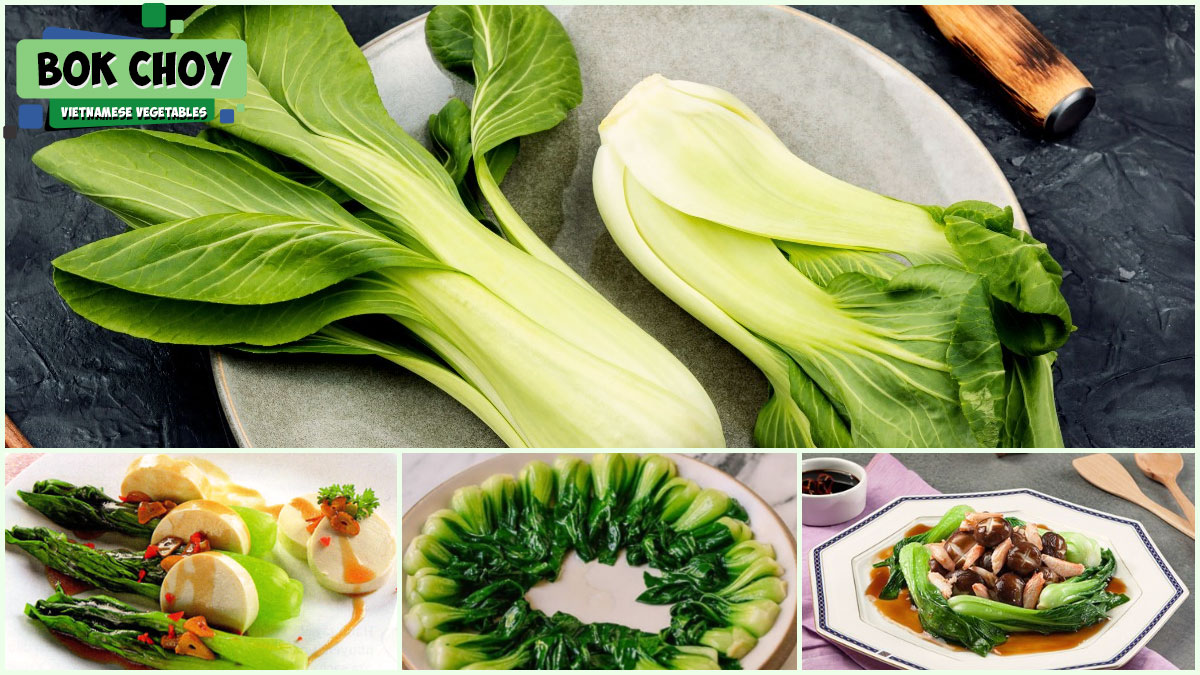
Kale (Cải xoăn) – Frequently used in Vietnamese detox smoothies.
Kale is gaining popularity vietnamese vegetables due to its impressive nutritional benefits. Though not traditionally used in Vietnamese cuisine, it’s now found in various dishes as healthy eating trends rise. Common preparations include salads, stir-fries, and soups. Kale is also blended into nutritious smoothies and baked into crispy kale chips at some Vietnamese cafes. With its high fiber, vitamins, and minerals, it’s a nutritious addition to any diet.
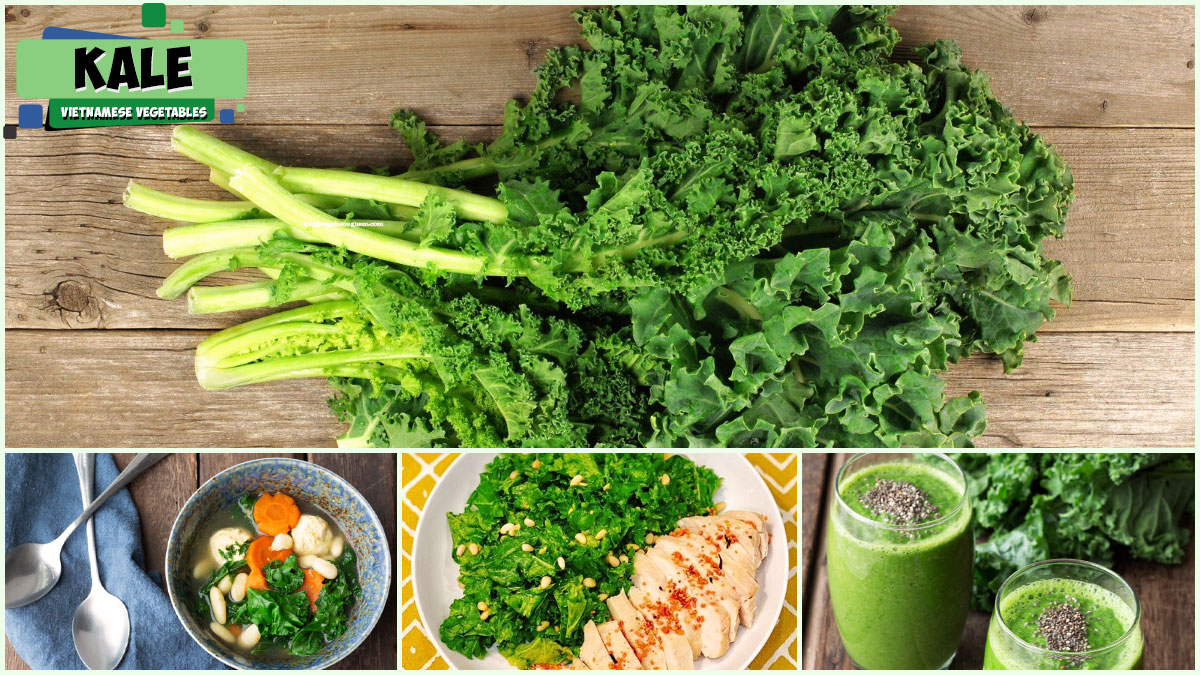
Crown Daisy (Cải cúc)
Crown daisy, or Cải cúc, is a versatile vegetable in Vietnamese cuisine, known for its slightly bitter, sweet flavor reminiscent of spinach or arugula. It’s commonly used both raw in salads and cooked in stir-fries, soups, and stews. Rich in vitamins A, C, and K, as well as iron and calcium, it’s often added to hotpot dishes or used in traditional crown daisy soup with tofu and pork. Additionally, it’s valued in Vietnamese medicine for its cooling properties and is used to treat fevers and respiratory issues.
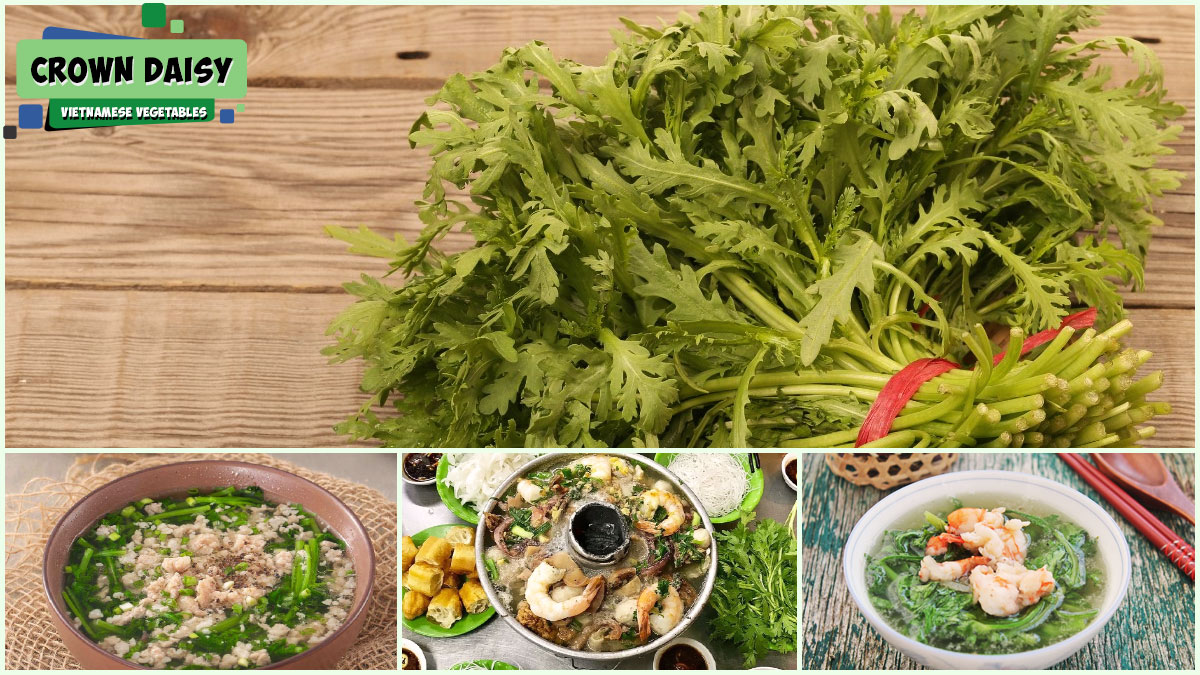
Choy Sum (Cải làn)
Choy sum is one of the beloved vietnamese vegetables, known for its delicate balance of bitterness and sweetness. It’s commonly used in soups and hotpot dishes, enhancing flavors with its unique taste. Choy sum can also be enjoyed raw in salads, stir-fried with beef or mushrooms, or simply boiled as a side. Rich in vitamins A, C, and K, as well as calcium and iron, it remains a popular and nutritious choice, though it should be thoroughly washed to remove any pesticide residues.
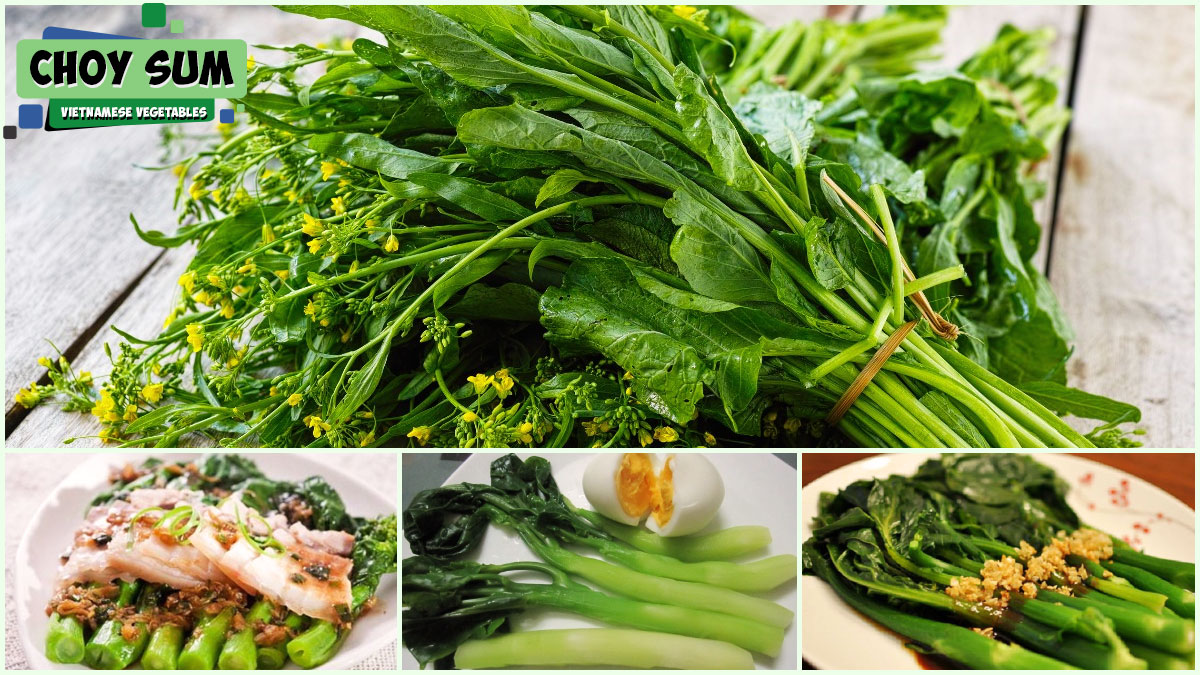
Jute Mallow (Rau đay) – Ranks among the top 20 common Vietnamese vegetables
In Vietnamese cuisine, jute mallow is a popular ingredient in soups, especially those with fish, crab, or shrimp, thanks to its distinctive slimy texture and flavor. Beyond its culinary uses, jute mallow is valued for its health benefits, including aiding digestion and preventing constipation. In traditional Vietnamese medicine, it is used for its high fiber content and potential anti-inflammatory and antioxidant properties.

Katuk (Rau ngót)
Katuk is a small green vegetable commonly found in the Vietnamese countryside. It is frequently used in soups and traditional medicinal remedies. Katuk soup, which combines fresh ingredients like shrimp and ground pork, is a popular dish for family meals. However, individuals with low blood pressure should avoid katuk, as it can have a strong cooling effect on the body.

Banana Blossoms (Bắp chuối)
Banana blossoms, or Bắp chuối, are a versatile ingredient in Vietnamese cuisine, commonly used in salads, soups, and stir-fries. Rich in antioxidants and dietary fiber, banana flowers are a healthy addition to meals. A popular Vietnamese salad features thinly sliced banana blossoms mixed with cabbage, carrot, and onion, dressed with fish sauce, lime juice, sugar, garlic, and chili. This refreshing salad showcases the distinctive flavor and texture of banana blossoms.

Kohlrabi (Su hào)
Kohlrabi, known locally as Su hào, thrives in cooler climates and is widely available in Vietnam. This versatile vegetable is ideal for various dishes, including stir-fries with carrots and pork. With low fat and cholesterol, kohlrabi supports heart health and provides numerous benefits. It’s also a popular ingredient in Vietnamese pickled vegetables, offering a unique tangy flavor that enhances many meals.
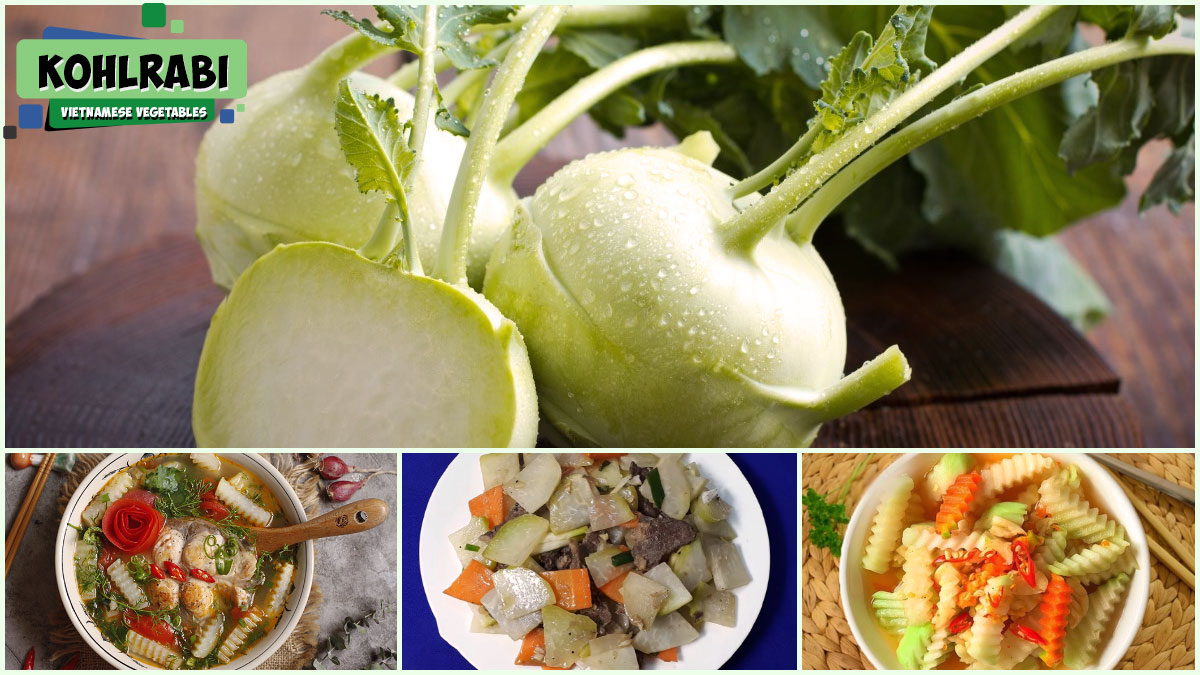
Chayote (Su su) – Considered one of the best Vietnamese vegetables
Chayote is a versatile staple among Vietnamese vegetables, enjoyed both raw and cooked. It complements seafood, meat, and other vegetables, with a popular dish being “su su nhoi thit,” where chayote is stuffed with minced meat and spices. For those interested in growing chayote, its seeds are available online and in specialty shops. This fast-growing vine thrives in warm, sunny conditions and requires minimal maintenance.
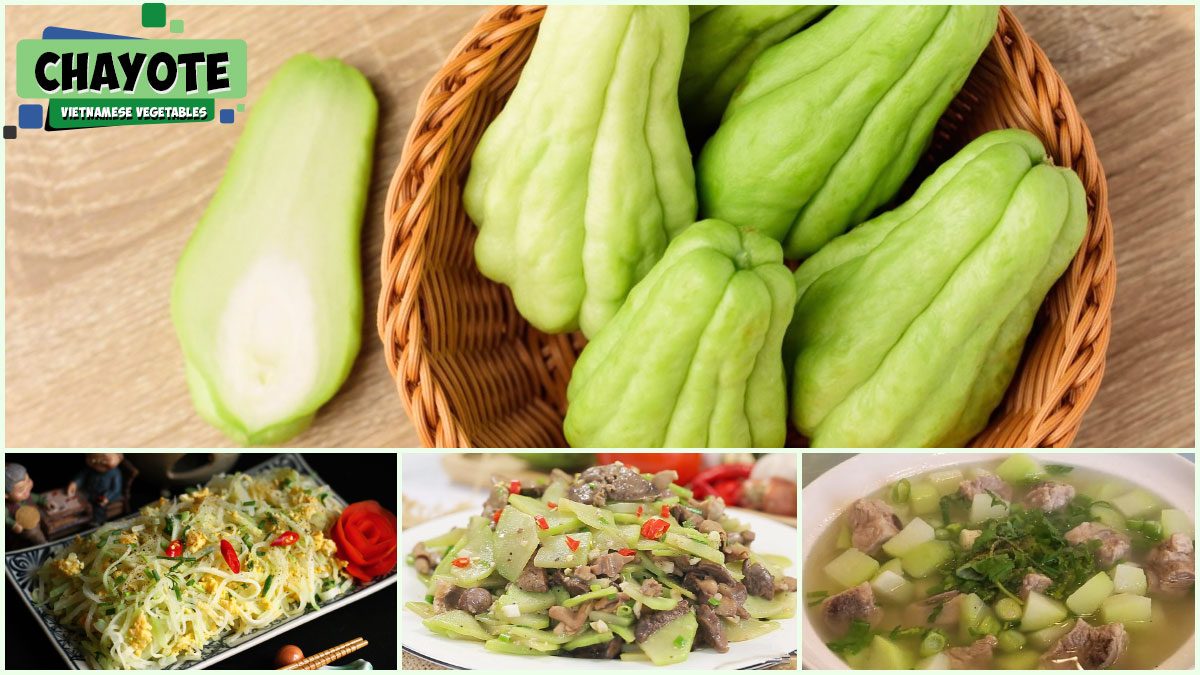
Winter Melon (Bí đao)
Winter melon is a flexible one in Vietnamese vegetables that pairs well with meats, seafood, and giblets, making it an ideal choice for Vietnamese stir-fries. When choosing a winter melon, select one that feels heavy for its size and has a smooth, unblemished skin. This vegetable offers a mild, sweet taste and a soft, slightly spongy texture when cooked.
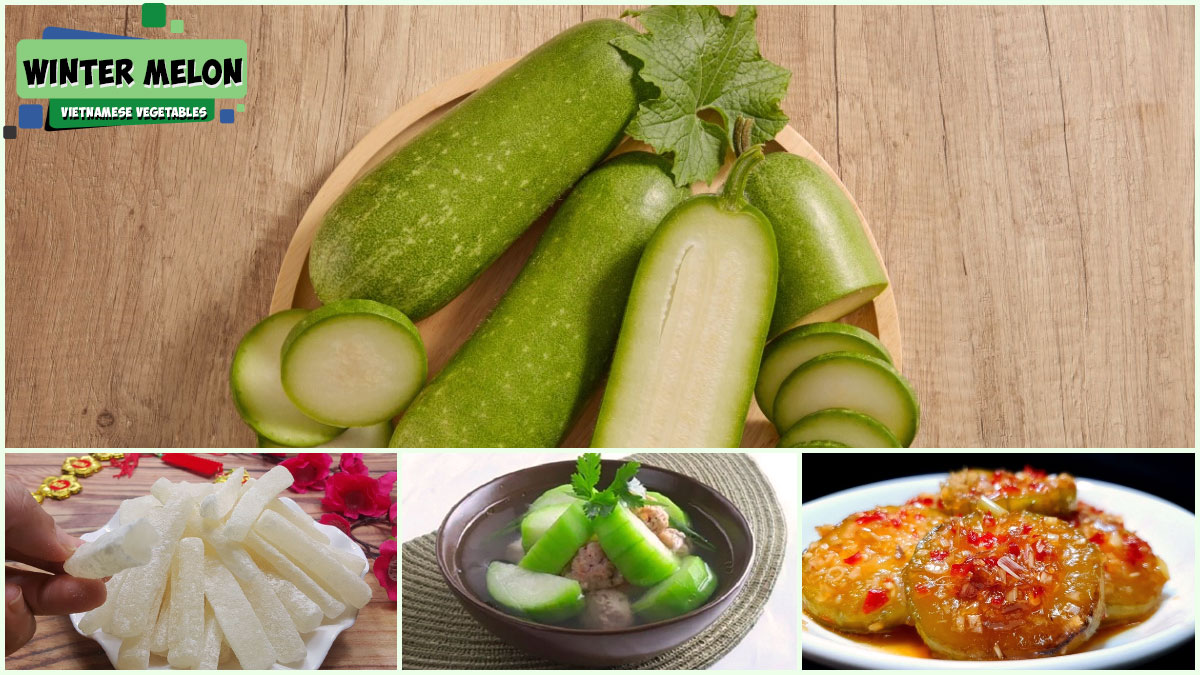
Lettuce (Xà lách)
Lettuce is a staple in Vietnamese cuisine, especially for wraps and rolls. A notable dish is “bánh xèo,” a crispy pancake filled with pork, shrimp, and bean sprouts, and served wrapped in lettuce leaves. Lettuce also acts as a base for grilled meats like beef or chicken, paired with fresh Vietnamese vegetables and herbs then dipping sauce, offering a crisp and refreshing complement to the flavorful meat and bold sauces.
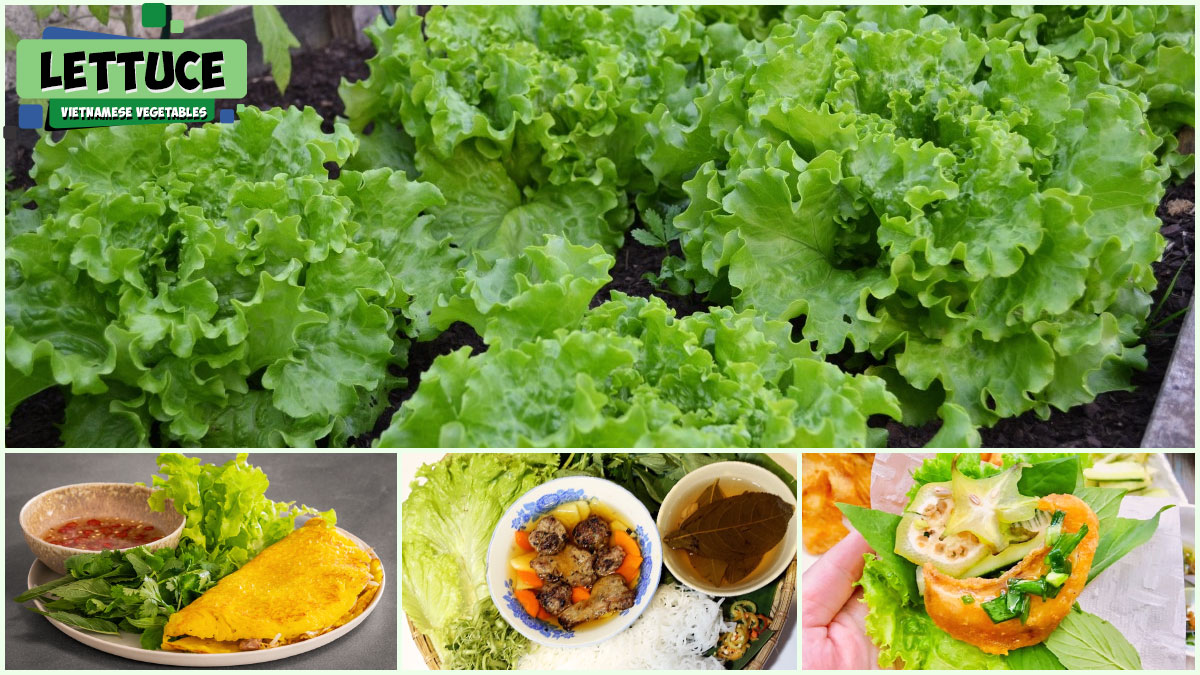
Potato (Khoai tây) – A key ingredient in Vietnamese vegetable curry
In Vietnamese vegetables, potatoes, or “khoai tây,” are valued for their carbohydrate content, dietary fiber, and vitamins like C and B6. They are low in fat and calories, making them a nutritious choice. Potatoes are crucial in dishes such as Vietnamese vegetable curry, where they provide a creamy texture and absorb the rich flavors of spices. They also pair well with root vegetables like ginger, daikon, and lotus root in warming soups.

Pennywort (Rau má)
Pennywort, known as “Rau má” in Vietnam, is valued for its culinary and medicinal uses. It is commonly added fresh to salads, soups, and stir-fries, imparting a refreshing, slightly bitter taste. Pennywort is also enjoyed as a juice, which is believed to enhance circulation and reduce inflammation. In traditional medicine, it is used for its antioxidant properties to treat skin issues, fevers, digestive problems, and to alleviate stress and anxiety.

Discover the magic of Vietnam with Asia Legend Travel, where vibrant culture, breathtaking landscapes, and mouthwatering cuisine await. Immerse yourself in the beauty of renowned destinations like Phu Quoc, Hoi An, Da Nang, Nha Trang, and Ha Long. Each location offers a unique blend of natural wonders, historical charm, and modern comforts, ensuring an unforgettable vacation experience. Explore the essence of Vietnam with our Vietnam 14D13N tour and create lasting memories with us.
Exploring Vietnamese vegetables reveals a rich tapestry of flavors and nutritional benefits. From fresh and vibrant ingredients to traditional recipes, these vegetables provide a unique and authentic culinary experience. Whether you’re a seasoned foodie or new to Vietnamese cuisine, embracing these vegetable-centric dishes offers a delightful journey into Vietnam’s gastronomic traditions. Don’t miss the chance to enjoy and appreciate the diverse and healthful flavors that this beautiful country has to offer.












